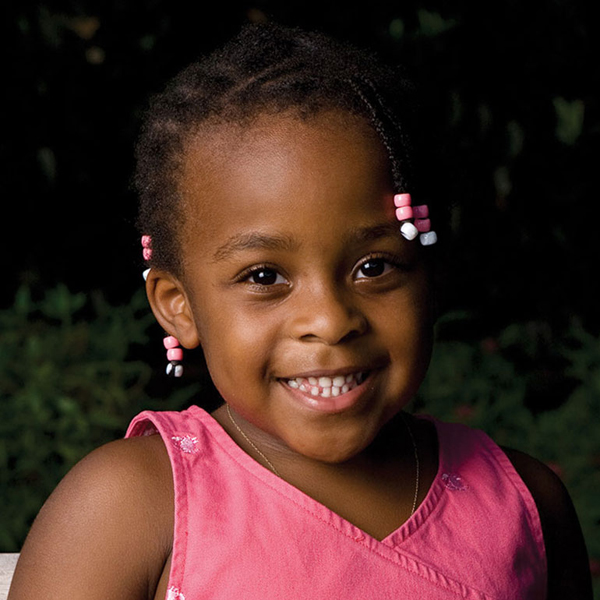Barbara’s hair is deep black, like the velvet edges of a monarch butterfly’s wings. Each strand curls around, like her never-ending questions. Together, the strands gather into tiny, soft springs. Then they weave in and out, hiding their ends and beginnings.
When I became a parent, it was the idea of fixing this hair that intimidated me the most. During our initial exploration of adoption, my husband and I read Inside Transracial Adoption. The significance of black hair care is not obvious to most whites, and the book’s authors make it clear. They tell potential adoptive parents that, if they are white and their children are black, hair care will “not come intuitively” and that “there is no tolerance in the [black] community for not taking care of a child’s hair.”
These two statements daunted me. In truth, I know so little about hair care that I would have been nervous about fixing the hair of any child. But if I had had a girl with fine, straight hair like mine, I would have kept it cut short or slapped in a plastic barrette, to keep her bangs out of her eyes. Her hair would have been simple and messy, and I wouldn’t have thought much about it.
Instead, and wonderfully, my daughter, Barbara, is a black girl, which makes all the difference. For most African-Americans, hair care directly correlates to love and dignity. As writer Susan Straight, a white woman with biracial children, explains, “In our family, and in the black community where much of our family has lived, the care and maintenance of hair means more than barrettes and ponytails; hair reflects pride and care, and neglected heads display a serious lack of mother’s love.”
So I want Barbara’s hair to look good, because it says something about me. But, mostly, I care because of what it says about her: I want everyone to know she is loved. The problem is, I am not very good at fixing it. I have learned a lot by reading books, observing stylists, getting tips from black women, and checking out the styles I see on little girls around town. Most of all, I have learned through trial and error, from working on my daughter’s head.
I am better, and faster, than I used to be. But sometimes, I still draw crooked parts, leave strands of hair floating loose, or make lopsided styles. I lived 33 years without ever having fussed with anyone’s hair. And now, every day, I fuss with Barbara’s.
I do it because a well-kempt head indicates love; but also because teaching Barbara pride in her hair helps her feel connected to, and proud of, her racial identity. When she squirms as I pull the comb through, when I rub in hair grease, when her beads flash in the sun, even when I do not know what I am doing but try anyway, she is connected to a history of other mothers and daughters. I tell Barbara all the time that her hair is beautiful. But taking the time and effort to style her hair teaches her that she and her hair are loved, are valued, are good.
When we fix her hair, Barbara and I talk, sing, and watch TV. Lately, she has been asking for braids, with pink beads. I section off her combed and conditioned hair. I divide precisely and pull tightly. But as soon as I gather up the separate strands and start the turning and weaving, my fingers betray my hope. I don’t pull tightly enough. I gather up uneven pieces and leave lumps. Many hairs escape, fuzzing the braid, revealing my lack of skill.
Sometimes I worry that, one day, Barbara will look at photos and see her fuzzy braids as proof of my ineptness as a mother. But when I look at all of her — at this long-limbed, big-bellied girl, singing in my living room — I know she will grow up feeling my love for her twist and turn through my clumsy, weaving fingers. Dimples flashing, brown eyes shining, my daughter is beautiful and perfect, from her long, lean toes to her good, good hair.



